Project Description:
Ten years in, we're still happy with what we did, though several improvements are still on the wish list.
The project was driven by the confluence of several environmental goals, along with a specific problem to be solved. The principal environmental goals were to improve the home’s overall energy performance and durability; additional environmental goals were to improve daylighting and ventilation while enhancing comfort and aesthetics. The specific problem we needed to solve was a wood-framed pony wall that extended below grade, representing a long-term durability risk.
- Project scope and initial goals –
- Resolve durability risks, particularly below-grade wood-framed wall.
- Improve energy efficiency.
- Improve thermal comfort.
- Improve aesthetics, solar access, and relationship to the outdoors.
- Produce energy on site (install PVs).
- Enlarge living room.
- Accomplish all of the above in as resource-efficient a manner as possible and using environmentally preferable materials and methods.
- Deconstruction/Demolition – Recyclable materials (primarily wood scrap, cardboard, and metals) were source-separated and recycled. Non-recyclable waste (primarily roofing that was well past its life expectancy, and leaky single-paned windows) were landfilled. Usable wood scraps were retained for future projects. The old water heater was donated to another project.
- Material Selection –
- Roofing: steel in sloped areas, highly durable five-ply built-up roofing under living roof in flat area
- Interior wall finishes: low-VOC paints and earth plasters
- Decking: FSC-certified, highly durable tropical Machiche
- Windows: energy-efficient, durable, steel-clad wood
- Indoor Environmental Quality – Low-VOC finishes used throughout. Forced air ducting removed, reducing blowing particulates. High-efficiency fans installed in baths and kitchen.
Other Awards:
Sustainable San Mateo County Green Building Award
Address:
Lat. / Long.:
Location Type:
Köppen Climate Type:
Climate Region:
Solar Insolation:
Annual HDD :
Annual CDD:
HDD Base Temp:
CDD Base Temp:
Occupancy Type and Details:
Private owner, owner-occupied single-family detached home. Three permanent occupants. Two home offices; home occupied 24/7, with the exception of infrequent family vacations. Frequent visitors, including a part-time contract worker.
Conditioned Floor Area:
Unconditioned Floor Area:
Multiple buildings?:
Historic?:
Completion date:
Site description:
Hillside site on uphill side of street; west-facing. High corner @ NE, low corner @ SW, steep in those two corners, terraced throughout.
Materials:
o Roofing: steel in sloped areas, highly durable five-ply built-up roofing under living roof in flat area
o Interior wall finishes: low-VOC paints and earth plasters
o Decking: FSC-certified, highly durable tropical Machiche
o Windows: energy-efficient, durable, steel-clad wood
Energy Highlights:
Natural gas water heating (DHW & space heating), cooking, clothes dryer. All else electric.
Electric Utility Company:
Gas Utility Company:
Datasets and Utility Bills sources and reliability:
Sources are utility bills; reliability as good as my data input!
Net electricity usage (purchased electricity):
Natural gas amount (purchased energy):
Foundation wall assembly:
poured-in place concrete
Space heating - Manufacturer & Model:
Domestic hot water - Manufacturer & Model:
Ventilation - Manufacturer & Model:
Outcome of project goals:
Comfort much improved; energy performance significantly improved, albeit not dramatically. Considering the addition of floor area and not doing anything to the upstairs, we're very happy with the outcomes reflected here. We haven't yet collected energy data from the recent addition of insulation in the 1st floor attic or improvements to infiltration, expect to see more reductions from that work. Working with an existing older home that has been remodeled in stages poses significant challenges. Things I've learned in the 10 years since the bulk of the work was done would change my approach somewhat if I were to tackle the project today. For example, I would work harder on airtightness (if not going crazy with it), and I would pay more attention to window U and SHGC.
Discrepancies:
We didn't base the work on modeling, just on what we knew needed to be done. No predictions were made.
Special architectural measures:
In order to get heating system into conditioned enclosure, replaced old forced-air furnace with hydronic system including high-efficiency Munchkin boiler that provides both space heating and DHW. Radiant floor downstairs, Runtal wall radiators upstairs. Replaced single-paned aluminum windows in downstairs with wood double-paned, clad windows. Insulated downstairs walls with rigid polyiso in the framing cavities; recently (spring 2015) insulated the downstairs attic with loose-fill R-40 Havelock Wool. Put vapor barrier in crawl space.
Energy Use and Production Documentation:
Air Changes per hour, ACH50:
Project Photos:
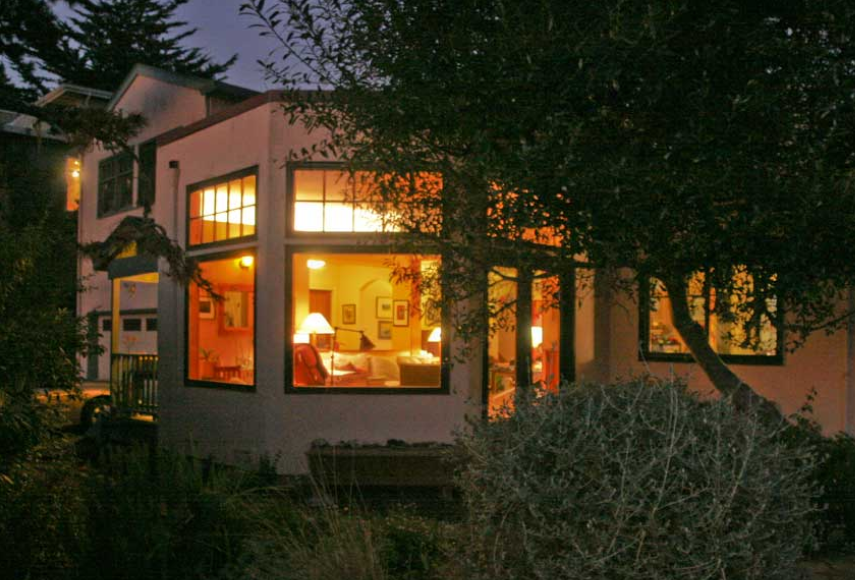
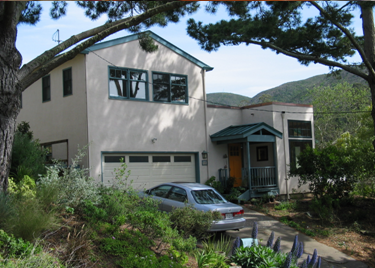
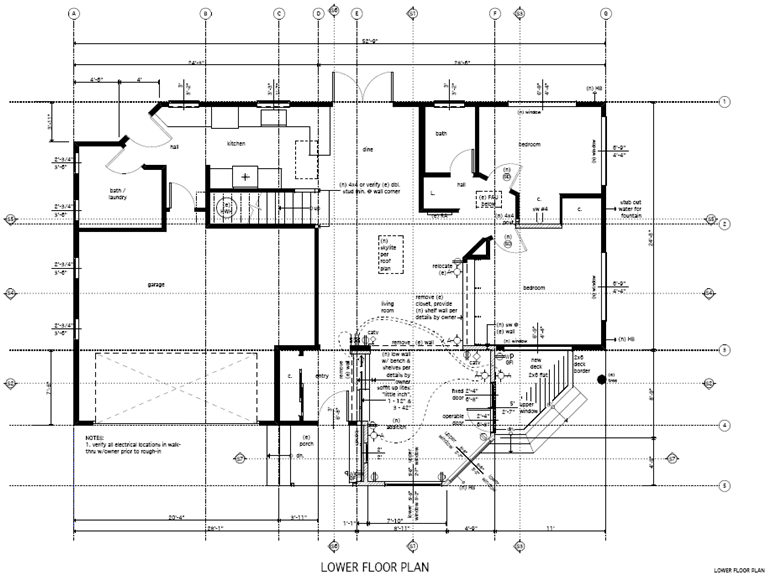
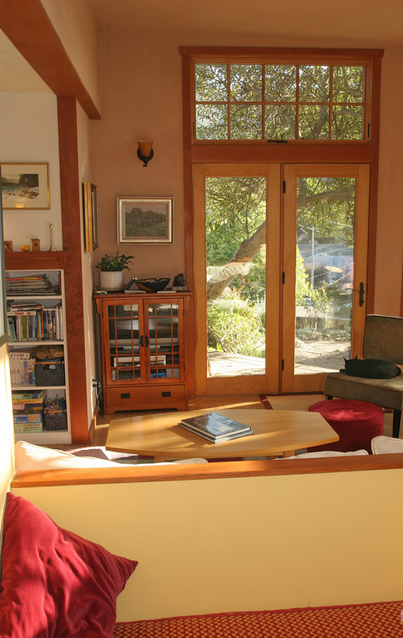
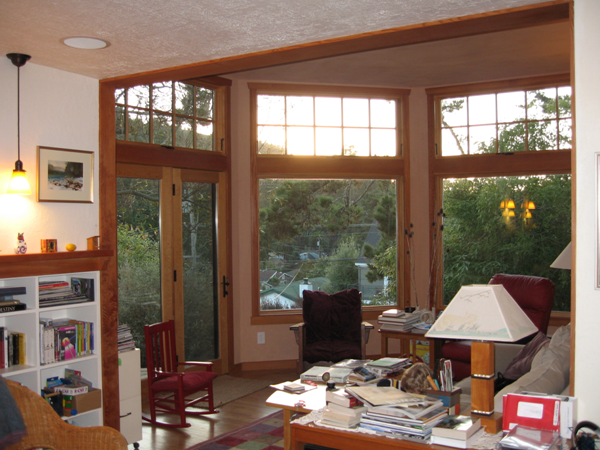
Number of Bathrooms:
Scope Description:
Renovation of various parts/aspects of existing ~1,400 sf home plus 2005 addition of ~200 sf.
Site conditions:
Renewable Energy Sources:
Summary of enclosure strategy/description:
2nd floor roof: 2x10 @ 16" o.c., fiberglass batt insulation; composition shingles
2nd floor walls: 2x4 @ 16" o.c., fiberglass batt insulation
1st floor roof: attic, R-40 loose-fill wool insulation; ~60% standing-seam steel roofing, ~40% living roof over 5-ply built-up roofing
1st floor walls: ~90% 2x4 @ 16" o.c., rigid polyiso in cavities (~R-21); ~10% 2x4 @ 16" o.c., fiberglass batts
Window Description:
Mostly Pozzi/Jeld-Wen wood (upstairs) and wood clad (downstairs) double-hung, double-paned.
Door Description:
3 sets of double-paned patio doors, hinged; 2 sets wood, 1 set wood clad. 1 old single-paned half-glazed door, 1 new top-light wood entry door. Steel insulated door from house to garage.
Number of Bedrooms:
Project Team:
Team Member:
Team Members:
Ann Edminster, Design AVEnues LLC -- owner/designer
John Fordice, Other Fish Architect -- architect of record
Bill Dakin, Davis Energy Group -- ME/HVAC designer
Bill Wilson -- living roof designer

Mechanical Equipment Installation Details and Comments:
Only spot-exhaust ventilation in baths